The Memory Masters teach Visualisation, Imagination and Association
Visualisation
Firstly the Memory Masters teach us that to remember something, the most effective way is to visualise it a zany, silly, crazy, goofy scene. They teach you to shoot a mental movie and run it in your head, something we all do to some extent anyway. Their strength is in taking this ability and building on it, so that it becomes a powerful tool for your life.
The more crazy you can make this mental movie, the more action, silliness, colour, life, movement and imagination that you can put into it the better will be your recall of the item being memorised.
Imagination
The more vivid your imagination, the easier it is for you to come up with visualizations - or mental movies - and therefore the better your natural ability to remember and recall things.
Some people naturally have a more wild and vivid imagination than others, but we all have the ability to harness this power.
If we channel it into helping us learn and remember constructive things it can be very powerful tool- like from things you use in your daily life, important phone numbers, to material that you use in your occupation, things that are studying, and of course language learning and such like.
For daydreamers this comes more naturally, and with work most normal people have the potential ability to become Memory Masters, but only a few will put in the effort to achieve this!
Association
To make the learning powerful, we are taught by the Memory Masters to associate what you are trying to remember with something or some things you already know.
So to remember something new, we link it, or associate it with something else that we know.
In the 200 Words a Day! system we build a Memory Trigger© that associates the new word, phrase or saying, with something we already know.
So for example if we are trying to learn the Spanish word for 'to stick out' or 'to show' or 'to appear' which is
asomar
...we would associate it with something we know... So, let's say we do not know the word asomar, and we have just learnt it...
- First we make a silly scene, then...
- try to visualise it.... (well we make it even easier in the 200 Words a Day! system by giving you a picture of the silly visualisation.
So let's imagine that AS OMAR Sharif the actor shows his head through the theater curtains, and it appears briefly and SOME ARE happy to see him, and others not...
You can add more and more to the visualization, to make the memory of it more deep, and each thing you add, will generate another memory hook. Each memory hook helps the recall process, because remembering one thing often adds the link to the next, and the next, and "...it is all coming back to me..."
You know you can add SOME ARE now throwing things at his head as it appears.
And imagine stuff splatting all over it.... and so on and so forth.
Memorizing and Recalling
There are two processes here.
Getting it IN - Memorizing
This is the process of memorising something, and embedding it in to the subconscious.
During the day the brain is constantly deleting 'irrelevant background noise' and not storing it into your hard drive of the brain. Of all the thousands of stimuli you sense throughout the day, the brain discards most of it. Background music, cars driving past, background conversation and hum in a restaurant, peoples' footsteps, doors opening and closing etc.
Significant stuff gets into the subconscious and is stored... or memorized
We tend to remember what is more important, or what has had an impact.
So if a significant event occurs, this is indelibly printed in to the subconscious. For example, many people will know exactly what they were doing when news of the 9/11 crashes took place or on news of the death of Princess Diana. The events become natural Memory Triggers©.
But to make an 'ordinary' event memorable you can add a MEMORY TRIGGER©.
The world's Memory Masters teach us that the best way is create a silly visualization, and shoot this movie in your mind's eye.
We do this for each and every word of a foreign language, and take this one step further by giving you a cartoon of this visualization, and combine it with the Memory Trigger written and spoken, with the foreign word spoken by a native speaker so that you learn the correct, accurate pronunciation without the slightest nuance that a non-native will often inject.
Of course much of what we remember is not done with some earth-shattering event, but is done in the normal course of daily discussions and interactions with people and media.
But by knowing the power of harnessing the imagination and visualisation process we can channel some energy into memorizing things we want to memorize.
Getting it OUT
Getting material OUT of the subconscious is also very important.
The ability of getting it out is largely a matter of how well the material has been PUT IN.
That is the more effort and time you put into putting the material IN to your subconscious, the easier it will be to get it OUT. The more hooks and links in the Memory Trigger, the sooner the brain will find one of the links as it searches through the hard drive between your ears.
Closing your eyes during the recall process often makes remembering easier too! Brain scans show the brainwave patterns change when the eyes are closed, and one is trying to recall something.
[I watched one of the Memory Masters on TV and they showed his brainwave patterns as he recalled his long list of unrelated 'stuff'.]
The more one has used the material, the more familiar it becomes, and the more links there are in the mind to the stored material.
If you are having trouble recalling material, the Memory Masters teach us that we should reshoot the mental movie, and add more to it - more life, colour, action, sound, emotions, senses.
Add emotion - give it the bad-glad-mad-rad-sad treatment and try to FEEL the emotion as you remember it. So try and FEEL BAD-GLAD-MAD-RAD-SAD. [RAD is short for RADICAL...]
Reviewing Learned Material
If one does not immediately use the material, for example, foreign language vocabulary, then one needs to reinforce the learning, through review and restudy.
There are optimum intervals at which someone should review learned material, if it is not put to immediate use, or if it is not associated with a memorable event, discussion or occurrence.
Scientists tell us that these optimum intervals (at which point learned material needs to be restudied or reviewed, are after 1 day, a week, a month, a 3 month period, and after a year.
These previously mentioned events which embed the vocab or sentences of a foreign language, need not be earth-shattering. Most are just normal day-to-day occurrences, like a discussion with a sales assistant in a store while in a country where your target language is spoken.
Hence that is the magic of the 'Total Immersion' situation, especially where you are forced to use your target language with someone who does not speak a word of a language with which you are conversant.
Without the reinforcement of such events, a Memory Trigger© is such a powerful tool. It gives you a bunch of hooks and links to remind you of a word or phrase, until you can use them in conversation.
Once you use them in conversation with a native speaker the words' use in context, i.e in a correct, and appropriate setting, further reinforces and consolidates the learning.
The more Memory Triggers© you can learn, the more material you will have stored in the subconscious of your brain, waiting for a chance to get put into real use in language. If you don't use the material, do remember to review it and restudy the Memory Triggers©, preferably at the optimum intervals, to consolidate the learning until you get into the situation where you can use the material and hear the vocabulary in its correct context.
So by reinforcing the tricks of the Memory Masters with some timely review, we improve our learning process.
Memorize Useful Stuff
The Memory Masters memorise long lists of facts, numbers and dates and many of them go to events such as the World Memory Championships and such like.
I learned how to memorise one deck of shuffled playing cards, then two decks. I even taught one of my sons who was ten or eleven at the time. With this knowedge one can then go on and train oneself to memorise many, many more. The World Record is now something like 52 decks of playing cards!!
I found it a great trick to show off to people. You get a pack of cards, shuffle them up, then memorise them one by one, then recite them off from memory.
While a great trick, and an important foundation milestone in learning to memorise things I soon felt it was largely a waste of time.
What is the point in memorising a deck of cards, then shuffling them up again a minute later? It is generally wasted learning, unless you go on to become a card counter and beat the casinos.... like a small handful of superclever, highly focussed and rather extraordinary individuals.
Memory Master Dominic O'Brien was a card counter in his early days!
Why not put that energy and power into remembering useful things that interest you. Language learning, for those with such an interest, is one of those useful things for some people.
Who are the World Memory Masters
There are many great Memory Masters of the World, and many have terrific websites, and many have written books. So there is no shortage of information the techniques and tricks that the world Memory Masters teach.
Dominic O'Brien
Dominic O'Brien, the 8 times World Memory Champion, who is well known internationally, and who publishes courses and books on the techniques he has used to get him to the esteemed position in Memory Circles. Personally I like his stuff the best, and have adapted a number of his recommendations and teaching, incorporating them in to our courses. In particular his use of famous people as tools for remembering things.
This guy is one of the best Memory Masters, as his material is very easy to follow, and his tapes and recordings are delivered in a very relaxed style.
He also lets you feel that 'I can do this too', as he explains how he became a Memory Master.
Tony Buzan
Tony Buzan is also known as Mr Memory. He has written many books, such as Master your Memory. I read three of this books and found that most of them tended to be regurgitations of the same stuff. But it is very good material, and if you want to read the same book several times in different formats please do, because there are usually a few new gems in each. Just depends on how much time you have, and how much detail you want to go into. He has developed a very impressive Memory Matrix which will allow you to remember thousands of things.
Another Memory Master who is easy to follow, and understand.
Dr Gruneberg
Dr Gruneberg has published many books and founded the Linkword method of language learning, which uses word-association to teach languages. The 200 Words a Day! system is based on UK magician Paul Daniels's version of the Linkword system, and some language courses he developed in the 1980's.
Paul Daniels
Paul Daniels is a UK based magician who produced some foreign language courses based on the Linkword system.
Dr Bruno Furst
You may have seen those adverts in newspapers 'Does your Memory Let you Down?'. They have been running for years and years. Decades! Chances are these are pedalling one or more of Dr Furst's Memory Courses. Good courses, but very highly priced, and I think superceded by the material produced by Dominic O'Brien.
This Memory Master's material is very easy to follow also.
Gordon Dryden
Gordon, a New Zealander, is maybe not a Memory Master but his work is worthy of mention here. He has published The Learning Revolution, one of the best-selling educational books ever. Over 10 million copies sold, mainly in China, where his writings and teachings are revered. This book should be on the bookshelf of every person interested in, or involved in, education, raising children, teaching, learning and training.
Best,
Kevin Crocombe
www.200words-a-Day.com
Superlearning Spanish using the techniques of the Memory Masters | Superlearning French | Superlearning German | Superlearning Welsh | Superlearning Italian
What do the Memory Masters Teach?
200 Words a Day!
200 Words a Day! and Exceltra
Copyright 2004-2023 All Rights Reserved ©
IMAGINE how you'd
FEEL
seeing yourself learning at a rate of 200 words a day ... the ideal companion course that complements any language course.
|





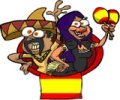
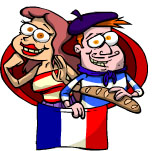
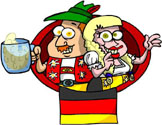
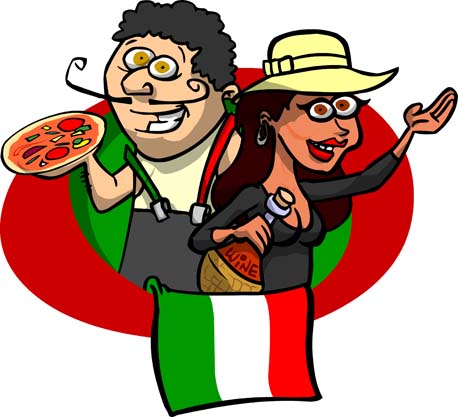
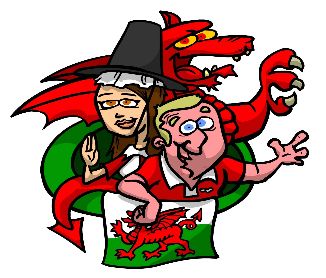
New! Comments
Have your say about what you just read! Leave us a comment in the box below.